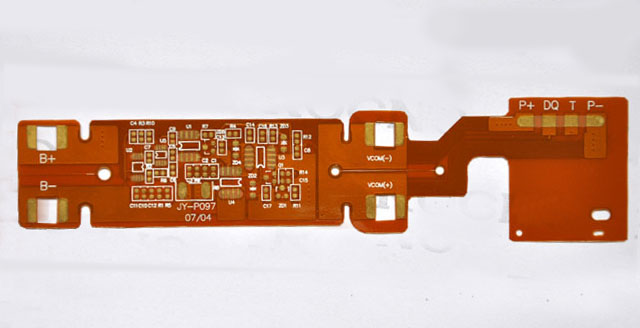In the structure of FPCB flexible circuit, the materials are insulating film, adhesive and conductor.

insulating film
The insulating film forms the base layer of the circuit, and the adhesive bonds the copper foil to the insulating layer. In a multi-layer design, it is then bonded to the inner layer. They are also used as a protective cover to insulate the circuit from dust and moisture and to reduce stress during flexing. The copper foil forms a conductive layer.
In some FPCB flexible circuits, rigid components formed of aluminum or stainless steel are used, which can provide dimensional stability, provide physical support for the placement of components and wires, and release stress. The adhesive bonds the rigid component and the FPCB flexible circuit together. In addition, there is another material sometimes used in FPCB flexible circuits. It is an adhesive layer, which is formed by coating the two sides of the insulating film with an adhesive. The adhesive layer sheet provides environmental protection and electrical insulation functions, and can eliminate a layer of film, and has the ability to bond multiple layers with a small number of layers.
There are many types of insulating film materials, but the most commonly used are polyimide and polyester materials. At present, nearly 80% of all FPCB flexible circuit manufacturers in the United States use polyimide film materials, and about 20% use polyester film materials. Polyimide material is non-flammable, geometrically stable, has high tear strength, and has the ability to withstand welding temperature. Polyester, also known as polyethylene terephthalate (Polyethylene terephthalate for short: PET), whose physical properties are similar to polyimide, has a lower dielectric constant, absorbs little moisture, but is not resistant to high temperatures.
The melting point of polyester is 250°C and the glass transition temperature (Tg) is 80°C, which limits their use in applications that require a large amount of end welding. In low temperature applications, they exhibit rigidity. Nevertheless, they are suitable for use in products such as phones and other products that do not need to be exposed to harsh environments.
"Polyimide insulating film is usually combined with polyimide or acrylic adhesive, and polyester insulating material is generally combined with polyester adhesive. The advantages of combining with materials with the same characteristics, after dry welding, or after multiple lamination cycles, can have dimensional stability. Other important characteristics in adhesives are low dielectric constant, high insulation resistance, high glass transition temperature (Tg) and low moisture absorption.
glue
In addition to bonding insulating films to conductive materials, adhesives can also be used as a covering layer, as a protective coating, and as a covering coating. The main difference between the two lies in the application method used. The cover layer is bonded to the cover insulating film to form a circuit with a laminated structure. Screen printing technology used for covering and coating of adhesive.
Not all laminate structures contain adhesives, and laminates without adhesives form thinner circuits and greater flexibility. Compared with the laminated structure based on adhesive, it has better thermal conductivity. Due to the thin structure characteristics of the adhesive-free FPCB flexible circuit and the elimination of the thermal resistance of the adhesive, thereby improving the thermal conductivity, it can be used in the working environment where the FPCB flexible circuit based on the adhesive laminated structure cannot be used. Among.
conductor
Copper foil is suitable for use in FPCB flexible circuits. It can be electrodeposited (Electrodeposited for short: ED) or plated. One side of the electrodeposited copper foil has a glossy surface, while the processed surface on the other side is dull and dull. It is a flexible material that can be made into many thicknesses and widths. The matte side of ED copper foil is often specially treated to improve its bonding ability. In addition to flexibility, forged copper foil also has the characteristics of rigidity and smoothness. It is suitable for applications that require dynamic deflection.